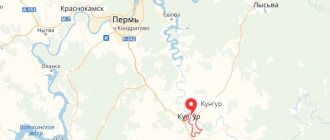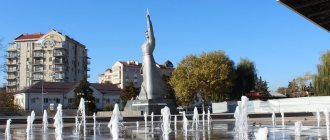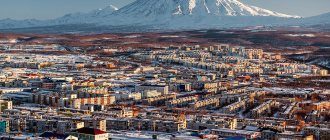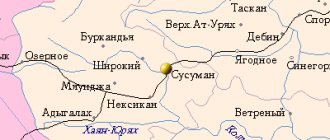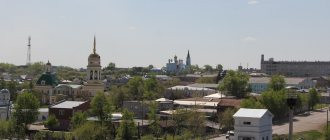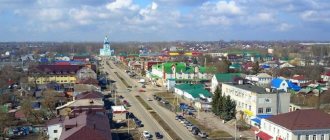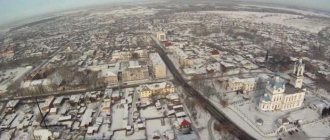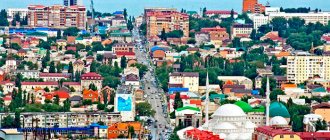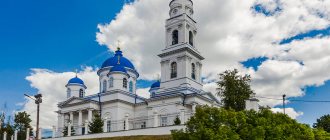The Ural city of Irbit is widely famous for the Irbit fair, motorcycles and the Museum of Fine Arts. Irbit is one of the oldest cities in the Urals.
Over the years, Irbit V.N. Tatishchev , academicians and travelers I.G. Gmelin and I.I. Lepekhin , famous doctor F.Kh. Gral , writer D.N. Mamin-Sibiryak , Marshal G.K. Zhukov . The latter was elected by the residents of Irbit as a deputy of the Supreme Soviet of the USSR.
The city's attractions
Irbit has several excellent museums that are widely known and should definitely be visited by every tourist who comes here .
Irbit State Motorcycle Museum
The Irbit Motorcycle Museum shows visitors the entire history of the development of the domestic motorcycle: from the first M-72 with a machine gun to the modern “Wolf”. Foreign motorcycles from world-famous companies are also presented. In total, the museum’s collection includes more than 120 motorcycles, of which more than 40 are foreign-made.
Museum visitors can take souvenir photos not only next to the motorcycles, but even sitting on the ones they like. The Motorcycle Museum is still very young (it was opened to visitors in June 2004), but has already become famous and popular among tourists coming to Irbit . Irbit is generally considered the motorcycle capital of Russia . This fame was brought to him by the Irbit Motorcycle Plant . During the war he was evacuated from Moscow and remained here. The Irbit Motorcycle Plant has produced more than 3 million motorcycles.
Irbit Motorcycle Museum
Address: Irbit, st. Sovetskaya 100A Phone: +7(34355) 4-26-01 E-mail: Website: www.gbuksoigmm.ru
Irbit State Museum of Fine Arts
The Irbit Museum of Fine Arts is the only museum of engraving and drawing in Russia. He has a rich collection of etchings. The works of a variety of European schools are presented here. Russian artists are also represented. There are works by world famous Rembrandt, Durer, Goya, Van Dyck and others. Thanks to the efforts of museum director Valery Karpov, the museum is growing and developing.
Irbit State Museum of Fine Arts
"Museum and Exhibition Information and Educational Center": Irbit, st. Elizariev 28v “Museum of Ural Art”: Irbit, st. Volodarsky 14 “Museum of Engraving and Drawing”: Irbit, st. Karl Marx 47 Phone: 8 (34355) 6-37-96 Website / virtual museum: www.irbitgmii.ru / www.igmii.ru YouTube: youtube.com/user/igmii
Irbit Historical and Ethnographic Museum
The Irbit Historical and Ethnographic Museum is one of the leaders among other Ural provincial museums in terms of the quantity and quality of exhibits. The museum has several halls - nature, merchant, Slavic life, WWII. It is in this museum that the basis for understanding the history of the emergence and development of the city is laid. The museum regularly hosts various classes and lectures.
Irbit Historical and Ethnographic Museum
Address: Irbit, st. Kirova 50 Phone: +7 (34355) 6-33-69 Email: Address: Irbit, st. Kirova 74 Phone: +7 (34355) 6-72-99 Email: Website: irbitiem.ru
Museum of Folk Life
The Irbit Museum of Folk Life was opened in 2011 to mark the 380th anniversary of the city. Mikhail Ivanovich Smerdov’s attempt to preserve the historical and cultural heritage was a success. Residents of Irbitsk and guests of the city are delighted to contemplate the painfully familiar objects of ancient Russian life, which were used by our fellow countrymen in the 19th-20th centuries.
Irbit Museum of Folk Life
Address: Irbit, st. Revolution 25 (Main Store, 2nd floor) Phone: +7 (34355) 62020 E-mail: ; Website: www.irbit-imnb.ru
Museum of the History of Education
The newspaper “Ekaterinburg Week” reported on June 13, 1893 that on May 25, after a prayer service, the building of the Irbit City School .
The city school did not last long. In 1907, the three-year school was transformed into the Irbit Men's Gymnasium . During the First World War, in 1915, a military unit was located in the building, and classes were housed in two rented apartments. Just like the school, the gymnasium did not last long: the revolution thundered and the civil war began. And after the liberation of Irbit from the White Guards, the classical gymnasium was transformed into a second-level school with a nine-year education. In 1933, the educational institution was awarded the status of secondary school No. 1, and a year later - the title of exemplary. The school was named after the proletarian writer Maxim Gorky .
Today, the school's museum presents a preserved collection of physical instruments from the 19th century men's gymnasium: a tellurium, a theodolite, a resistance store, a metronome, a dispersion prism, an arc lamp, a hygrometer, as well as a model of the solar system of the early 20th century and a star map.
Museum of the History of Education
Address: Irbit, st. Svobody 24 Phone: 8-912-033-61-17 (Shusharina Tatyana Grigorievna) E-mail: Website: friendssofthemuseum.jimdo.com
Exhibition hall of the children's art school
While walking along the streets of Irbitam , check out the exhibition at the children's art school . The exhibition hall of the school hosts exhibitions of paintings, graphics, photo exhibitions of members of the Union of Artists of Russia from Yekaterinburg , Tyumen and cities of the Sverdlovsk region , local artists and students of children's art schools in the Ural region.
In the educational classes and workshops of the school, it is possible for city guests to conduct master classes in decorative and applied arts: batik, wood painting, salt dough, felt, souvenir dolls, as well as the purchase of ready-made souvenirs.
Exhibition hall of the children's art school
Address: Irbit, st. Sovetskaya 17 Phone: +7 (34355) 6-43-27 E-mail: Website: dhsh-irbit.rf
Irbit Drama Theater named after. A.N. Ostrovsky
The Irbit Drama Theater was created in February 1846. In 1919, the first permanent professional troupe began working the Irbit Theater Ikonnikova. Until 1937, the Irbit Theater was a branch of the Sverdlovsk Drama Theater and served the areas of the Sverdlovsk region. Since 1937, the Irbit Theater has become an independent institution.
In 1950, the theater was named after A.N. Ostrovsky . In 1993, the Irbit Theater received municipal status. In 1983, the theater was closed for lengthy renovations, which later turned out to be almost twenty years. The artists returned to their stage only in 2000.
Today the theater, despite its age, is full of strength and energy. The Irbit Stage festival is held every two years . The festival of performances for children and youth “Through the Looking Glass” has become traditional.
The current theater team includes many interesting acting individuals from different generations. These are actors who went through a large theater school: O. Ivanova, S. Tushov. And, of course, talented young people: K. Skvortsova, A. Zheleznikova, N. Melnikova, V. Ilyin, T. Nazarov, V. Loginova, who make the performances mischievous, cheerful, filling them with the breath of young life. Today the oldest theater is headed by director B.G. Ginzburg and chief director L.L. Dopua.
Irbit Drama Theater named after A.N. Ostrovsky
Address: Irbit, st. Ordzhonikidze 51 Phone: +7 (34355) 6-41-68; 6-63-91 E-mail: Website: irbitteatr.ru
Rechkalova Cultural Center
Cultural Center named after. Twice Hero of the Soviet Union fighter pilot Grigory Andreevich Rechkalov is located in the building of the former Zaikovsky elementary school, where Rechkalov studied.
After a thorough reconstruction, it turned into a modern interactive museum complex containing a wealth of information about the biography of the outstanding Russian ace of the Great Patriotic War Grigory Andreevich Rechkalov .
The museum complex is complemented by Rechkalov's , which is an object of cultural heritage (historical monument). Behind the main building of the Cultural Center there is a park, in the center of which there is a howitzer brought from a military artillery unit in Yekaterinburg . And for young visitors there is a children's playground
Cultural Center of Twice Hero of the USSR G.A. Rechkalova
Address: Irbitsky district, Zaykovo village, st. Communist 207 Phone: 8 (34355) 3-46-06 E-mail: Website: mayrechkalova.wixsite.com
Farm "Irbit Ostrich"
Ostriches in the Urals are not surprising. Ostrich farming in the Sverdlovsk region has been developing for several years. So in Irbit there is a quiet corner with strange, funny birds. The Irbit Ostrich farm offers you to find yourself in an exotic society of interesting and unusual birds - ostriches.
On the farm you can meet other interesting animals: rabbits of six breeds, sheep, guinea fowl, Indian Brahma chickens, turkeys, quails and other interesting animals. If you pre-order, you can buy poultry meat, eggs and an ostrich egg souvenir.
Farm "Irbit Ostrich"
Address: Irbit, st. Elm Grove 1 Phone: 89505471088 E-mail:
Motorcycle Culture Center (Motodom)
The Motorcycle Culture Center welcomes motorcycle groups, clubs, and customizers on its territory from all over Russia. Extensive exhibitions of custom, unique cars and motorcycles. “Custom Forum” is held annually . Motocross races are regularly held together with the Russian Motorcycle Federation on its track. MotoDom clubs and the Meteor cycling club.
Motorcycle Culture Center
Address: Irbit, st. Proletarskaya 2 Phone: +7 (34355) 6-49-44 E-mail:
TOP 3 - what to see in Irbit in one day
If you don’t have time to explore all the sights of Irbit, you should pay attention to the most interesting and popular of them.
arcade building
- Address: st. Lenina, 21.
The Passage is the main pavilion of the Irbit Fair, built in 1897. Since its opening, the passage has become the main attraction of Irbit. In the newspapers it was called “Irbitsky Nevsky Prospekt”, and there was also the following expression: “Being at the fair and not visiting the arcade is the same as coming to Rome and not seeing the Pope.”
The three-story building is made of stone. The central mass and wings are decorated with rectangular attics, panels and frieze. The entrance is through a small extension with expressive windows, rusticated stone and an elegant attic.
The fair began with the raising of the flag of the Russian Empire. In this regard, there was a belief that if the flag turned towards Siberia, then the Siberians would succeed. If in the direction of Europe, then European merchants will get rich. After the flag was raised, grocery stores opened in the passage, performances and musical concerts were organized. The excitement reigned from dawn to dusk.
In 1905, a revolutionary meeting was held in the arcade building, initiated by A.I. Fadeev. Thus began the revolutionary part of the passage’s biography. In 1918, its basements served as cells for the White Guards. At the 1922 fair, the Soviet flag was raised for the first time.
The fair ceased to exist in 1929, and the NKVD headquarters was located in the passage building. So the building, where liveliness reigned, turned into the most terrible place in the city. During the Second World War, the passage was occupied by an artillery school.
The long-awaited revival of the Irbit Fair took place in 2003. The passage was restored, and life began to bubble up in it again. Currently, a variety of retail shops are open here, although concerts and performances are no longer organized.
State Motorcycle Museum
- Address: Sovetskaya st., 100A.
The main museum of the “Motorcycle Capital” was opened in 2004. The exhibition is based on a collection of motorcycles produced over the past 60 years. Here you can see motorcycles from wartime, Soviet times, as well as modern models. No less interesting are foreign motorcycles produced in England, America and Japan.
An important component of the exhibition are information stands where you can see documentary photographs and read information sheets about each motorcycle model. This museum will be interesting to visit for motorcycle fans, since the exhibition reflects the development of not only the Russian motorcycle industry, but also the world one.
Irbitsky fort
- Address: st. Lenina, 15.
The founding date of Irbit is considered to be 1631. Then it was called Irbeevskaya Sloboda. The first building on the territory of the new city was a wooden fortress, consisting of a powerful wall, a moat and log watchtowers. The fort was completely destroyed by the middle of the 19th century.
In 1874, this land was acquired by N.M. Peyker is a keen gardener and owner of a horse farm. On the site of the former fortress, Peyker organized a magnificent garden with alleys, ornamental shrubs, carousels and swings. After the revolution, the park fell into disrepair and eventually disappeared. Today you can find rare plants, broken stone figures and the remains of fountains.
In 2011, Irbit celebrated its 380th anniversary. In honor of this event, a log watchtower and part of the palisade were erected - these are exact copies of the elements of the ancient fort.
Another attraction is the wooden suspension bridge, which goes into the thick of the mixed forest. This complex is worth visiting for every tourist, because it clearly shows where the history of Irbit began.
Architecture and monuments
Irbit the 19th - early 20th centuries - architectural monuments. Their number in Irbit is the largest among all cities of the Sverdlovsk region (with the exception of Yekaterinburg ). Here you can see the Passage (1849), the remains of the Gostiny Dvor built in 1880 (the central façade was demolished in 1920), and numerous merchant houses.
The city is dominated by the so-called “brick style”, which is characterized by a variety of stone patterns. The historical center of the city has been quite well preserved since the 19th century and is a real architectural reserve that will be appreciated by lovers of antiquity.
Ancient Irbit architecture
It is impossible to imagine Irbit without magnificent buildings with traces of time on their facades. Most of the city's institutions are located in the buildings of former merchant estates, pre-revolutionary schools and “bourgeois” enterprises.
House of tradesman S.S. Khlebina
- Address: Volodarskogo street, 7.
It is known that S.S. Khlebin was a justice of the peace and an honorary resident of Irbit. His house was built in 1878. Against the backdrop of typical urban development, it is distinguished by its strict relief decor, patterned cornice, forged brackets and veranda with lattice.
In 1918, Khlebin fled abroad, and his house underwent a slight reconstruction: a number of window niches with frequent sashes and an additional entrance were added. During Soviet times, the mansion was turned into an apartment building, which it remains to this day.
Women's gymnasium building
- Address: st. Karl Marx, 37.
In 1871, the first women's school opened in Irbit. Initially, it existed as a pro-gymnasium, in which girls received three-year education, and at the beginning of the 20th century it expanded to a seven-year gymnasium. Mostly the daughters of peasants and townspeople studied here.
The gymnasium building was rebuilt many times, which is why elements of the original appearance were lost: a wrought-iron fence, outbuildings and a garden. Despite this, the gymnasium is an excellent example of pseudo-Russian style.
One of his risalits is decorated with an elegant attic, the other with a traditional gable. The semi-columns, sandriks and pylons have an original appearance. The lines of the frieze and cornice are striking due to the expressive relief.
Distillery building
- Address: st. Karl Marx, 124.
The distillery at one time made a huge contribution to the city budget, and during the fair celebrations it was in demand more than ever. The plant building was built by I.F. Toropov. He created a three-dimensional composition with wings of different heights.
The central mass is decorated with scapulars, dentil cornices, narrow gables and dormers. The ends are made in the same manner with the addition of rustication.
The plant operated from the end of the 19th century and was closed after the revolution. In 1941, the distillery was replaced by a chemical and pharmaceutical plant, evacuated from the Moscow region. Its branch is still located here.
House of merchant P.F. Kolmakova
- Address: st. Lenina, 4.
Since its appearance in 1858, the Kolmakov House has become the most impressive building in Irbit. It is designed in the form of a medieval fortress. Adjacent to the one-story mansion is a two-story building with pointed towers, a crest and lancet windows.
Servants lived in a one-story outbuilding, and Kolmakov himself occupied the castle. He was a well-known merchant of leather goods, which were in great demand at the fair.
After the building was nationalized, some of Kolmakov’s belongings were moved to the museum: a piano, paintings in carved frames, photographic equipment. Today, Irbitsk residents live in his Gothic castle.
Event tourism
Irbit Fair
Soon after its foundation, Irbit became famous throughout the country for its fair. The Irbit fair was one of the largest in the country (second after Nizhny Novgorod !). The fair was held annually from 1643 to 1929. The Irbit fair lasted one month - from February 1 to March 1.
At this time Irbit came to life, thousands of merchants came from all over the country and other countries. At this time, the population of Irbit increased by 10-15 times! Merchants exchanged goods from Europe and Asia. All premises of Irbit were occupied by tenants for one or two months. Huge sums were circulating here. The fair's turnover reached 60 million rubles. The rest of the year, Irbit was an ordinary quiet provincial town.
After the construction of the Trans-Siberian Railway , being left aside, the Irbit Fair began to fade away. In Soviet times (in 1929), the famous fair was completely closed - it did not fit into the Soviet era.
Traditions have now been restored. On Lenin Square , in Sirenevy Square and on the ancient streets of the historical city, open-air shopping malls are set up where enterprises from the Ural-Siberian region present their goods. Costume “festivities in the old style” are held, programs are created with the participation of folklore groups, dramatic and circus artists, performers of folk games and entertainment.
Irbit Fair
Time: annually, August More details: article on the website
Festival "City of Masters"
The City of Masters festival is one of the largest exhibitions of folk arts and crafts in the Sverdlovsk region. Here you can spend many hours looking for gifts, the range of which is extremely wide. These are traditional souvenirs: glassware, wooden toys, dolls, candles, handicrafts and much more.
Festival "City of Masters"
When: annually, August
Moto-fest "Irbit"
In 1991, the first motorcycle show took place Irbit the Irbit Motorcycle Plant . Subsequently, a new category of motorcyclists appeared in the country - bikers. And the event was renamed a bike rally.
Since 2010, the bike rally in Irbit has been held in the former Malinovka pioneer camp. Today, the organizers of the motorcycle festival set themselves the goal of uniting the subcultures of bikers and ordinary citizens who dream of an active holiday.
Moto-fest "Irbit"
Time: annually, last weekend in July
Custom forum
The custom forum is the final motorcycle event of the past year, which brings together the intelligent motorcycle community. In one place you can see several areas of motorcycle culture, immerse yourself in the atmosphere of motorcycle life, communicate live with legends and celebrities, ride unique exhibits of motorcycle technology, and also visit the Irbit Motorcycle Museum .
Moto-fest "Irbit"
When: annually, on the first weekend in October
Motocross in Irbit
Motorcycle cross-countries are always intense and spectacular competitions. Today, summer motocross races of different levels are held in Irbit : urban, regional and Russian on the track near the village of Melnikova and the village of Ryabinovy . And in winter, the Yunost Stadium hosts a spectacular ice race, “Speedway Irbit Style .
White nights of Irbit
in Irbit , not as a natural phenomenon, but as a cultural one. The traditional museum festival “White Nights of Irbit” for art lovers is held annually by the Irbit State Museum of Fine Arts . “White Nights of Irbit” is a festival of cultural diversity, displaying masterpieces of painting, sculpture, engraving and other creative styles.
White nights of Irbit
Time: annually, late May-early June
Irbit stage
The interregional theater festival-competition “Irbit Stage” is held in a small provincial town in the Irbit Drama Theater named after. A.N. Ostrovsky .
During the festival, walking along the streets of Irbit you can meet famous theater directors, critics, actors and other equally important people. Only in Irbit are spectators offered the opportunity to organize “trips” to the theater for ten days and get acquainted with all the main productions of the theaters of the Greater Urals.
“Irbit Stage” is a great theatrical festival for the audience!
Irbit stage
When: annually, June
The best theaters in Irbit
When tourists have looked at folk life, it is worth going to the theater to see authentic folk art. Colorful performances will not leave anyone indifferent.
Palace of Culture named after. VC. Kostevich
- Address: st. Sverdlova, 17.
The Irbit Palace of Culture is one of the best institutions of this specificity in the entire Eastern Administrative District. DC was founded by the director of the motorcycle plant V.K. Kostevich, after whom it is named today.
The Palace of Culture hosts classes and performances by participants in creative circles. Here they teach vocals, folk dance, playing various instruments (including folk ones) and choral singing.
The theater building is an example of Soviet constructivism. The ends of the wings are decorated with colorful mosaics. In one of the outbuildings there is an intimate cinema, which plays not only new films, but also Soviet ones.
Drama Theater named after. A.N. Ostrovsky
- Address: st. Ordzhonikidze, 51.
The Irbit Drama Theater was founded in 1846, making it the oldest in the Urals. Initially it was a branch of the Yekaterinburg Theater, but in 1937 it received the status of an independent institution.
The theater's repertoire includes original and classical productions aimed at different age audiences. Good fairy tales, love stories, black comedies - the theater has succeeded in its desire to please all viewers.
Initially, the theater building was small, wooden, but at the turn of the 19th-20th centuries. A magnificent stone mansion was built in the classicist style. It is decorated with strict pediments, heavy semi-columns, cores and a balustrade. This is the cultural and architectural heritage of Irbit.
Where to take a photo?
Wooden fort, sign of the founding of Irbeevskaya Sloboda
Address: Irbit, st. Kirova 80
Complex “Tales of Bazhov” and forged motorcycle
Address: Irbit, st. Sovetskaya 29, territory of the “Silver Hoof” store
Motorcycle "Beer Barrel"
Address: Irbit, st. Sovetskaya 85
Stele with a motorcycle "Wolf"
Address: Irbit, st. Sovetskaya 100, entrance of the Irbit motorcycle plant
Irbit
Ancient settlements
The oldest settlements on the site of the city arose in the Bronze Age (2nd millennium BC), the most significant of them, the Irbit settlement, located on a hill-remnant at the northwestern outskirts of the city, opposite the village of Melnikova on the left bank of the Irbit River.
In the lowest layer of the settlement, fragments of pot-shaped polished ceramics with a flat bottom and carved ornaments dating back to the Bronze Age were discovered. Its second layer contains evidence of belonging to the Early Iron Age. During the third settlement in the 10th-13th centuries, the top of the hill was separated from its lower part by protective structures: a deep ditch, a rampart, two rows of fences or palisades. Perhaps a representative of the local nobility lived in the settlement. The fourth and most recent occupation of the mound dates back to the 13th-16th centuries.
Ethnically, the ancestors of the Mansi lived here until the 13th century. At a later time, they were pushed out by the Siberian Tatars; on the northern outskirts of the present city there was their settlement of Irbeevsky Yurt. At the beginning of the 17th century, Russian settlers arrived from central and northern Russia.
Sloboda
In 1631, at the confluence of the Irbit River with Nitsa, the Verkhoturye Slobozhan Ivan Shipitsyn (Spitsyn) founded the Irbeevskaya Sloboda (later the name Irbitskaya was fixed in use). A fort was founded.
The population of the settlement consisted of state peasants and white local Cossacks, as well as sextons, clergymen, coachmen, a miller, a blacksmith, a gunner, and bobyli. According to the first census of 1666, in the settlement there were two courtyards of a boyar's son, a clerk's courtyard, 21 courtyards of white Cossacks and 112 courtyards of quitrent peasants. According to the 1680 census, in addition to the prison there was a church with two priests. 22 villages subordinate to the settlement are listed - Zaikova (33 households), Shmakova (14), Rechkalova (also 14 households). There are a total of 220 households of quitrent peasants.[8]
Soon after its founding, a market appeared in the settlement. In 1643, by decree of Tsar Mikhail Fedorovich, the market was legalized, and the Irbit Fair arose. It was held every day on the patronal feast, Epiphany. Subsequently, the dates of the fair changed. European, Asian and Siberian goods were sold here. The fair became the second in Russia after Nizhny Novgorod.
County town
During the uprising of Emelyan Pugachev, the residents of Irbit resisted the peasant troops.
In 1775, Catherine the Great granted the settlement the status of a city for the “unshakable loyalty of the residents of Irbit” to their empress in the fight against the “villainous gangs” of Emelyan Pugachev. In 1776 the city received a coat of arms:
Coat of arms (1776)
An upright shield, cut crosswise in two, in the upper part in a silver field there is a blue St. Andrew's cross, showing the unshakable loyalty of the inhabitants of the city of Irbit to Her Imperial Majesty, in the lower part in a red field there is a golden saber and Mercury's rod placed on the cross, meaning the first defeat by this weapon villains, and the second exercise in the trade of the inhabitants of this place[9]
In 1781, after the formation of the Irbit district, Irbit received the status of a district city.
City plan in 1895 Russia. Perm province. Irbit. City government, the Cathedral of the Epiphany and the monument to Catherine II on Catherine Square. 1903 Irbit. Monument to Catherine II. Postcard from the 1900s.
Since 1821, Irbit was built according to a general plan as a single architectural ensemble of a fair city. In the central part, the layout structure of the general plan has survived: 5 rays of the main streets converging to the main shopping area, the main street crossing them and a rectangular network of blocks.[10] During the fair, a fair theater and circus operated in the city, and the newspaper “Irbit Fair Leaflet” was published since 1863[11]. In 1891, writer Dmitry Mamin-Sibiryak collaborated with the newspaper.[10]
Since 1846, a professional drama theater began operating in the city.
In 1885, a section of the Ural Railway of the Trans-Siberian Railway was laid. The road went from Yekaterinburg to Tyumen, bypassing Irbit. The city and the fair, remaining aloof from the highway, began to lose their commercial significance. However, the fair lasted until 1929.
On April 27, 1879, in the city of Irbit, a fire occurred that destroyed almost the entire central part of the city. As a result, 12 blocks burned out.
In February 1883, a monument to Catherine the Great by the famous sculptor Mikeshin was solemnly opened on the main Torgovaya Square; the square was renamed from Torgovaya to Catherine. This is how the residents of Irbit perpetuated the memory of the empress, who gave Irbit the status of a city. The Perm governor and the Yekaterinburg bishop came to the opening. The bronze empress held a letter in her left hand, where the significant number for the city, “February 3, 1775,” was stamped. The monument was built on the initiative of the City Duma using money raised by the people of the county, and was cast in St. Petersburg.[12]
During the revolution of 1905–1907, a strike of printing workers, a meeting of workers and peasant uprisings took place in Irbit.[13]
In 1914, the Luch cinema opened in the city.[14]
In 1916, a railway appeared in Irbit: the Yekaterinburg–Tavda line of the North-Eastern Ural Railway (part of the Trans-Siberian Railway) passed through the city.[15] There was also water transport, and there was a pier on the Nice River.
Irbit Fair
Main article: Irbit Fair
Soon after its founding, a market appeared in the settlement. In 1643, by decree of Tsar Mikhail Fedorovich, the market was legalized, and the Irbit Fair arose. It was held every day on the patronal feast, Epiphany. Subsequently, the dates of the fair changed. European, Asian and Siberian goods were sold here.
In 1686, a guest courtyard was built for the fair.
In the 18th century, attempts were made to move the fair to the larger cities of Yekaterinburg and Tyumen, but they were unsuccessful[11].
In 1734, Academician of the St. Petersburg Academy of Sciences Johann Georg Gmelin visited the Irbit fair on his way to the Great Northern Expedition under Vitus Bering and left a description of the fair:
The streets are so full of people, horses, sleighs and all kinds of goods that you can barely get through... There were Greeks, Jews, Bukharans... Everyone brought with them the goods of their land and brought them through Arkhangelsk: wine, French vodka, etc., Bukharians - products from gold, silver, and the Russians - silver extracted from ancient graves... There was also a state-owned shop with copper utensils brought from Yekaterinburg... Small pies were sold on the streets: shouting, noise, squabbling could be heard everywhere, in places there were groups of beggars sitting around fires... For money you could have everything at the fair[16]
After the establishment of the Orenburg border fortified line in 1735-1742 and the abolition of internal duties in 1735, the number of foreign merchants temporarily decreased, but the fair remained one of the largest and gathered traders from all over Russia and from the border regions. This is reported by academician Ivan Lepyokhin, who visited the Irbit fair during the expedition of 1768-1772 and left a detailed description of it in his diary.[15]
The building of the passage, the main pavilion of the Irbit fair
In the 19th century, in terms of monetary turnover, the Irbit Fair was the second in Russia after the Nizhny Novgorod Fair[11]. The fair was of exceptional importance for the international fur market and the Russian tea market; it hosted merchants from China, India, Central Asia, Western Europe and Russia. During its implementation, the population of Irbit increased many times. Only during its holding there were fair theaters and circuses in the city, and a newspaper was published.
In 1864, the Irbitsky Passage was opened, the main symbol of the fair, as it was called then: “Nevsky Prospect of Irbit”. The grand opening of the fair took place on the square in front of the passage. According to legend, the progress of the fair was associated with the procedure of raising the Russian flag over the main pavilion: the flag got tangled - the fair is protracted, turned around immediately - trade will go well, turned towards Siberia - the fair will be favorable for Siberians, towards Europe - for merchants from central Russia.
In 1885, a section of the Ural Railway of the Trans-Siberian Railway was laid. The road went from Yekaterinburg to Tyumen, bypassing Irbit. The city and the fair, remaining aloof from the highway, began to lose their commercial significance. However, the fair lasted until 1929.
Civil War and the first five-year plans
In the revolutionary year of 1917, the main monument of the city, the monument to Catherine II, was demolished (the sculpture was melted down around 1927).
In January 1918, Soviet power was established in Irbit; in July 1918, the city was taken by units of the White Siberian Army; a year later, during the Yekaterinburg operation, it was occupied by Red Army troops.[15]
In 1919–1923, Irbit was the district center of the Yekaterinburg province, the district (1923–30) and district (1924–34) center of the Ural region, and since 1934 the regional center of the Sverdlovsk region.[15]
From 1926 to 1933, a horse-drawn railway operated in the city.
During the pre-war five-year plans, the city turned into an industrial center.
In 1930, a school-factory was created. In 1933, the first peat extraction machine in the Soviet Union was made here. Since 1937, the plant specialized in the production of bearings. Since 1939, it has produced auto-tractor trailers. Now it is the Irbitsky Special Equipment Plant.[17]
Irbit in World War II
Stele near the IMZ plant management
During the Great Patriotic War, evacuated enterprises were located in Irbit. From July 1941 to 1943 inclusive, the artillery school evacuated from Smolensk was located in the city. In 1930, a diatomite plant was founded, on the basis of which, after the arrival of equipment from evacuated glass and porcelain factories, the Irbit glass factory was established in 1941. In 1941, on the basis of a motorcycle plant evacuated from Moscow, the Irbit Motorcycle Plant (IMZ) arose. The glass and motorcycle factories worked for the needs of the front, creating motorcycles and unbreakable glass for tanks, airplanes and searchlights. On May 2, 1942, Irbit received the status of a city of regional subordination[18]. In the summer of 1945, the first concentration camp for Soviet prisoners of war appeared in the vicinity of Irbit.
Second half of the 20th century
On February 1, 1963, the Council of Workers' Deputies of the city of Irbit was transferred to the subordination of the Sverdlovsk Regional Council of Workers' Deputies[19].
In 1972, a branch of the Sverdlovsk Art Gallery was opened.
In 1975, the Irbit bakery was founded.
On September 1, 1981, the city was awarded the Order of the Red Banner of Labor “for the active participation of the city’s workers in the formation of Soviet power, their great contribution to ensuring the defeat of the Nazi invaders in the Great Patriotic War, the successes achieved in economic and cultural construction, and in connection with the 350- anniversary"[20].
Modernity
View of the city of Irbit
In 1996, the first elections of the head of the municipality of the city of Irbit
.
On September 24, 1996, by decision of the Irbit City Duma, the first Charter of the municipal formation of the city of Irbit was approved, registered by the Department of Justice of the Sverdlovsk Region on September 30, 1996 under No. 76.
On November 10, 1996, the municipality was included in the regional register[21].
In 2003, the tradition of holding the Irbit Fair was restored.
On December 31, 2004, the city was granted the status of an urban district[22].
On January 1, 2006, the name municipality of the city of Irbit was approved[23].
In 2013, the monument to Catherine the Great was restored on the main square.
In 2022, the municipality was renamed the Urban District “Irbit City”. 390th anniversary of the city.
Temples of Irbit
Holy Trinity Bishop's Compound, Holy Trinity Church
Address: Irbit, st. Ordzhonikidze 100
Temple in the name of the holy martyrs Faith, Hope and Love and their mother Sophia
Address: Irbit, st. Komsomolskaya 72
Sretenskaya Church
Address: Irbit, st. Revolution 27B
Panteleimon Church
Address: Irbit, corner of Kalinin and Kirov streets
Temples and churches of Irbit: spiritual rest
The oldest buildings in Irbit are temples and churches. Many of them were lost, but those that survived attract special attention from pilgrims.
Church of the Life-Giving Trinity
- Address: st. Ordzhonikidze, 100B.
Trinity Church was built in 1835 on the city cemetery. The stone building was created according to the design of architects I.I. Charlemagne and A.A. Mikhailova. It is a quadrangle, which is crowned with a hemispherical dome. The apses, altar and chapels give the building a cruciform shape.
The church is made in classicism style and has a simple decor. The window openings are decorated with simple rods; panels can be seen on the apses. The two-tier bell tower with a high spire is decorated with modest pilasters.
The church was never closed or destroyed, thanks to which it was perfectly preserved. Some of the most valuable objects are memorial plaques that testify to the work of the elders Nalimov and Shipitsin in 1872 and 1906. The boards are located inside the building and are in harmony with the interior.
Church of the Presentation of the Lord
- Address: st. Kirova, 27B.
The first Sretensky Church was located on the site of a prison castle. In the winter of 1781 it burned down. Construction of the new temple began in 1786. The five-domed temple with a tented bell tower was part of the fair ensemble and a city high-rise dominant feature. The building is made of stone in the style of Russian architecture.
Lush kokoshniks and figured platbands added variety to the strict appearance. In 1870, additional decorations appeared on the facade, copied from churches of the 17th century.
In 1930, the Sretenskaya Church received the status of a cathedral, but two years later it was closed. The building began to be used as a boiler room for a trailer plant. The revival of the temple took place in 2008. It is currently in effect. New bells and a tent were installed on the bell tower. The roof of the apse was also replaced, but the building as a whole has not been restored.
You may be interested in: Sights of Yekaterinburg
Where to relax?
Historical Square (named after V.I. Lenin)
Address: Irbit, st. Lenin
Victory Boulevard
Address: Irbit, st. 50 October
Lilac Boulevard
Address: Irbit, st. Kirov
Natural Park "Bugry"
Address: Irbit, st. Kutuzova 45, forest park area of Irbit
Stadium and forest area "Pine Grove"
Address: Irbit, st. Road
Active recreation in Irbit and its surroundings
Irbit is a destination for excursion tourism, but fans of sports entertainment will not be disappointed either.
BugryPark
- Coordinates on the map: 57.654581, 63.055682.
BugryPark is the best open-air sports and entertainment complex in Irbit. A rope course of complex configuration is open on the territory. There are suspended logs, cobwebs, walkways and towers. Nearby there are trampolines, a climbing wall and trolleys.
In addition, the infrastructure includes the rental of roller skates, bicycles, hoverboards, electric vehicles and ATVs, as well as trails for riding one or another vehicle.
BugryPark offers organization of family events, for which you can rent a gazebo and barbecue. The complex is mainly designed for children and teenagers. Visits are possible by group requests and pre-registration.
Ski resort "Snezhinka"
- Address: st. Kutuzova, 45.
“Snezhinka” is known as a venue for skiing competitions among children and adults. Such events are organized every season and are loved by citizens and visitors.
The base occupies a one-story building, around which there is a birch grove with paved trails. You can rent all the necessary equipment at the attraction's rental office.
Ski resort "Pine Grove"
- Address: Dorozhnaya st., 6A.
The name of the base speaks for itself - it is located in a magnificent pine forest. Clean air and forest silence create a wonderful atmosphere for practicing your favorite sport. Like Snowflake, Pine Grove is home to a cross-country ski race that takes place every winter.
Yunost Stadium
- Address: Motozavod microdistrict.
In the summer, football competitions are organized at the Yunost Stadium, and in the winter, a skating rink is opened here and skate rentals are available. The infrastructure of the complex includes a spacious football field, rows of stands and a building that houses a rental office, a gym, showers and a buffet.
Famous residents of Irbit
By the way, four residents of Irbit are included in the Guinness Book of Records for records set on Ural motorcycles . Back in 1992, Konstantin Matveev drove around the city stadium non-stop with his side stroller raised for 8 hours and 14 minutes. Another Irbitsk resident, Vladimir Glukhikh , rode his motorcycle in reverse without stopping for 8 hours and 47 minutes. Then Anatoly Bikishev and Alexander Bulanov , taking turns changing on the move and filling the tank with gasoline as they moved, rode on a Ural motorcycle with a raised sidecar for 24 hours. The mileage during this time was 1014 kilometers.
And in March 2011, Irbit resident Viktor Zavyalov made the largest samovar in our country, which was recognized as the official record of Russia. It is the most spacious in the world, containing 415 liters of water.
History of Irbit in stone: monuments and sculptures
Historical monuments have been decorating Irbit for a long time. Some of them were established under the Soviet Union, others remember the rule of the Romanovs.
Memorial complex "Fire of Memory"
- Address: Russian Cemetery.
The memorial complex was erected on the site of the mass grave. The first monument was erected in 1957; later it was replaced by a monumental composition consisting of several parts.
In the center of the complex there is a wall made of stones with an order and slabs on which are engraved the names of heroes of the Great Patriotic War. The background is a three-meter red banner, and a little to the left the Eternal Flame burns.
The second part of the complex are 66 tombstones of soldiers who died from wounds in Irbit hospitals. On Victory Day, a solemn meeting is held on the territory of the memorial and a guard is on duty.
Memorial to Trailer Soldiers
- Address: Revolution Street.
In 1941, 1,065 employees of the trailer plant went to war. The company itself invested a lot of money in the production of camp kitchens for the needs of the front. 327 trailer trucks did not return home.
In 1975, when the country celebrated the 30th anniversary of the Victory, a monument dedicated to the fallen plant workers was unveiled in Irbit. It consists of two pointed steles, lined with metal. The pedestal has the shape of a circle on a plane. On the side of the stone slabs the names of the soldiers are engraved in gold.
Memorial of the Great Patriotic War
- Address: Pobedy Boulevard.
In a small square on Sverdlov Street there is a stele, the center of which is decorated with the Order of the Great Patriotic War. The base of the stele is decorated with a golden laurel branch - a symbol of victory.
The monument is installed at the beginning of an alley with bright flower beds. Every year on May 9, a solemn meeting is held here, which brings together local residents and students from nearby schools.
Monument to Catherine II
- Address: Lenin Square.
In many settlements that acquired city status thanks to Catherine II, monuments were erected in her honor. But not all of them come from the pre-revolutionary era. The Irbit monument to the empress was erected in 1900.
Catherine, embodied in bronze, proudly contemplated the developing town. The monument was striking in detail: diamonds and lace could be seen on the luxurious dress, and the empress’s magnificent curls seemed to flutter in the wind.
The sculpture was located in the center of the fairground. The merchant Kolmakov (owner of the Gothic castle) traded leather goods at its foot.
In 1918, the bronze sculpture was demolished, and a monument to Lenin was erected on its pedestal. However, not even a century had passed before the leader had to give up the pedestal to Catherine. The monument was restored in accordance with the original.
Don't miss: Sights of the Sverdlovsk region
How to get to Irbit?
Irbit is located 204 kilometers northeast of Yekaterinburg. By car you can get from Yekaterinburg to Irbit in several ways. You can follow the Tyumen tract to Kamyshlov, then turn to Irbit. You can also get there through Rezh, Artemovsky, Zaykovo. You can also get to this city by regular buses or by train going to Tavda or Ustye-Akha.
Coordinates for GPS navigator
57.67383266424232, 63.058537341308465
Where to go: entertainment in Irbit
A small joy for Irbitsk residents is the green corners of nature, where they can take a break from the bustle of the city and enjoy the silence.
Lilac Square
- Address: st. Lenina/st. Kirov.
Lilac Square has existed in Irbit since Soviet times. Pioneers from local schools looked after him. In the early 2000s, the square was in disrepair, the bushes were drowned out by weeds.
In 2022, a decision was made to revive the square. Lilac alleys, benches, paved paths and flower beds appeared again. In the future, it is planned to plant rowan and maple trees.
Already now the square has a beautified appearance. It has a children's playground with slides, ladders and a rope course.
Entertainment complex "Golden Key"
- Address: Sovetskaya street.
If you are traveling with a child, be sure to take him to the Golden Key. This entertainment corner is decorated with picturesque fountains, decorative bridges and lace fences.
Flower beds are blooming everywhere, and arched trees add a special touch. Children will especially enjoy the pond with ducks, which they can feed with bread. It will also be interesting to take a photo next to the figurines of fairy-tale characters.
Park of the 40th anniversary of Komsomol
- GPS coordinates: 57.687742, 63.048089.
The 40th Anniversary of the Komsomol Park is a green area surrounded by the Irbit River. During Soviet times, it was the center of cultural life. There was a summer theater here, gatherings of pioneers and Komsomol members were held, and there were sculptures.
The park was abandoned in the 1990s and was left to the forces of nature for a long time, turning it into a wild forest.
Today it is an ecologically clean place with well-trodden paths. Birch, aspen and spruce trees grow here. There are benches near the river. To get to the park you need to cross a bridge. This is the path from civilization to the bosom of nature.
You may be interested in the sights of other cities of the Sverdlovsk region - Sysert, Nevyansk, Pervouralsk, Verkhnyaya Pyshma, Krasnoufimsk, Alapaevsk, Nizhny Tagil and Kamensk-Uralsky
Those who have looked into an old house or grandma's closet with many strange things know this feeling of mystery, as if you are touching the past. This is exactly the feeling you get when you walk along the streets of ancient Irbit, open the doors of centuries-old buildings and stop near ancient sculptures. Indeed, this is an unusual city that awaits curious guests.
